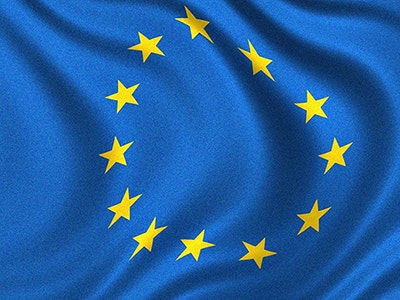How will Europe cope without its swing producer, Groningen?

Europe is expected to cope with a far reduced contribution from its biggest gas-field and seasonal swing gas producer, Groningen, over the next few years. Lower than expected demand, combined with additional storage, well supplied international LNG markets, new supply projects and underused import capacity should mean the reduction has little impact. However, falling output in Holland and then the UK offshore sector is expected to lead to a steady rise in import dependence – the extent of which will depend largely on uncertain future European demand, with domestic supply not expected to recover unless shale drilling gets going.
For forty years the giant Groningen field, jointly operated by the Exxon and Shell JV, NAM, has been the main source for balancing surges in North West European (NWE) winter demand, as well as providing a substantial baseload flow. But now a series of major earth tremors means production is being capped. Groningen annual quotas first applied in January 2014 at 42.5bcm, compared to 2013 production of 54bcm. Then, in early 2015, a new sharply reduced quota of 16bcm was introduced for 1H 2015, along with the suspension of the northern Loppersum sector of the field altogether. In June the total year figure was lowered to 30bcm, and a figure of 27bcm is in place for the gas year 2015/16 (aligned with storage year), although this can rise to 31bcm if the weather is particularly cold.
The restrictions led The Netherlands, which had depended on Groningen for around 60% of its supply, to become a net importer for first time in 50 years in Q3 2015 as suppliers filled storage in preparation for winter. Groningen supplies low calorific L gas, high in nitrogen, largely to the residential sector across Holland, Germany, Belgium and northern France, which fluctuates sharply with heating demand. L gas is also supplied from German fields and balanced by the 7 bcm Norg facility, but otherwise must be converted from normal gas.
Less flexible with age
The Groningen restrictions come on top of steady declines in the broader region’s seasonal swing production potential over the last 15 years, as existing natural gas fields have matured. The UK and Germany now provide almost no swing capacity, down sharply from 2000 when they held 35-40% of the region’s total or 6.1bcm/month, according to McKinsey. In the same period, Norway increased swing capacity from 1.9 to 3.1bcm/month – although that is increasingly being constrained as baseload contracts fill pipeline capacity. Dutch swing capacity dropped from 7.3 to 5bcm/month before the Groningen restrictions.
The flexibility that these fields and Groningen used to provide now needs to be met from alternative sources – although this year’s mild winter (so far) may not prove much of a test. Seasonal storage capacity has been expanded over the last few years, driven by higher winter/summer spread related to the anticipated reduction in regional seasonal supply, reaching 25bcm in 2015 - and forecast to rise to 34bcm by 2025, along with 24bcm of flexible storage. Over the last year, storage utilization has been rising, with withdrawals accelerating in early 2015 to 0.23bcm/day for the winter 2014-15, compared to 0.09bcm/d the year before. The same is expected this winter, although very mild weather has so far meant little has been required.
The other main sources of supply are LNG, Norway and Russia, both for swing demand and to fill storage in summer. Underutilized LNG import terminals in the U.K., Belgium and the Netherlands are expected to receive 167 cargoes in 2015, up from 132 in 2014 and the most since 2011, according to Bloomberg. In 2013 barely 20% of EU LNG import capacity was utilised, leaving plenty of spare capacity to absorb any additional demand. More is being built, especially in Eastern Europe, where new connections are also helping integrate gas networks and supply sources.
In summer 2015, relatively high prompt summer prices also drew Norwegian gas into storage, but with little Norwegian flexibility in winter, Russian gas is expected to take its place (if needed) as lower oil-linked prices filter through - especially if LNG prices stay relatively firm due to highly seasonal Asian LNG demand. Gazprom has stated it will cut prices to compete with LNG imports, although it is not clear that it intends to drop the price link to oil. Recently it said it planned to keep gas supplies to Europe at about 156-160bcm a year in 2016-18. There is little constraint on EU pipeline import capacity (apart from Norway), with roughly twice as much as needed, although these are not third party access, and Gazprom continues to be under investigation in the EU for anti-competitive practices.
Lower demand than had been forecast has also cushioned the blow from Groningen’s restrictions, mainly driven by lower gas-to-power demand and mild weather across the region. In 2014 EU gas consumption fell 10% compared to 2013, to 485 bcm, of which 265 bcm was produced domestically (Norway included) and 230 bcm imported.
But that fall is expected to reverse over upcoming years. Sergei Komlev, Head of Contract Structuring and Price Formation at Gazprom Export, at the Flame conference in April 2015, said the “consensus forecast” is that EU demand will grow by around 30% to 632 bcm in 2035, driven by higher power generation demand, more CHP and use of gas in transportation. Domestic production is expected to fall to around 206 bcm in 2035, leaving the EU requiring imports of 426 bcm - 196 bcm more than in 2014.
Influence of LNG to grow
Going into 2016, low utilization of LNG regasification capacity, a loose international LNG market until 2020 and with European-Asian summer price spreads relatively narrow, LNG is likely to play a bigger role in supplying seasonal storage this summer than last, when Norwegian supplies filled much of the gap. With 65 million tonnes (88 billion cubic metres) per year of LNG export capacity under construction in the US, there is expected to be a greater influence from Henry Hub prices. Add new LNG supplies from Australia and other countries, and the international LNG market is expected to become far more liquid and independent of the oil market, which should in turn influence European pricing.
With the marginal cost of US LNG is at 115% of Henry Hub plus shipping, well below current gas prices in Europe, power should move power away from current suppliers and improve energy security in Europe, despite the fall in Groningen output. The European Commission is also turning its attention to LNG and gas storage, for which it will introduce a European-wide strategy in 2016. In southern Europe big new import schemes from Kurdistan, Azerbaijan and possibly Iran, as well as new finds in the east Mediterranean will also add considerable volumes to imports, leaving the continent well supplied but less self-sufficient.
 Jeremy Bowden currently works as a freelance journalist and energy analyst, serving a variety of clients across the world, with work ranging from editing and features, to in-depth reports and public relations material. His experience spans over twenty years in the energy, specialist energy media and utility sectors in a variety of positions in both Europe and Asia, including five years at IHS in Singapore as Midstream Manager for the Asian region, followed by a short spell as IHS-CERA Associate Director, Emerging Markets. Before IHS, he was employed as Senior Asian Energy Correspondent for Dow Jones in Singapore, where work included contributions to the Asian Wall Street Journal. Prior to Dow Jones he worked at Energy Argus for five years in London and Singapore, where he was editor of the daily Asia-Pacific refined products news and price report. Jeremy also reported for Argus and PH Energy in the early days of the deregulated UK gas market, and spent four years involved in regulatory reporting for Thames Water. His qualifications include a Master’s degree in International Business and Finance from Reading University in the UK, and a degree in Economics.
Jeremy Bowden currently works as a freelance journalist and energy analyst, serving a variety of clients across the world, with work ranging from editing and features, to in-depth reports and public relations material. His experience spans over twenty years in the energy, specialist energy media and utility sectors in a variety of positions in both Europe and Asia, including five years at IHS in Singapore as Midstream Manager for the Asian region, followed by a short spell as IHS-CERA Associate Director, Emerging Markets. Before IHS, he was employed as Senior Asian Energy Correspondent for Dow Jones in Singapore, where work included contributions to the Asian Wall Street Journal. Prior to Dow Jones he worked at Energy Argus for five years in London and Singapore, where he was editor of the daily Asia-Pacific refined products news and price report. Jeremy also reported for Argus and PH Energy in the early days of the deregulated UK gas market, and spent four years involved in regulatory reporting for Thames Water. His qualifications include a Master’s degree in International Business and Finance from Reading University in the UK, and a degree in Economics.